
BE PREPARED FOR THE ARCTIC!
BE PREPARED FOR THE ARCTIC!
BE PREPARED FOR THE ARCTIC!
BE PREPARED FOR THE ARCTIC!
Be informed
The Arctic is vast. This is not a country nor a continent, but a region high North that is composed of an ocean surrounded by land. The Arctic ocean hosts the North Geographic Pole at its center. All around we find the northern part of Norway, Iceland, the coast of Russia, the Bering sea, Alaska, the Northern Arctic territories from Canada and Greenland. Unlike Antarctica, which is unmanned, you will find several settlements in the Arctic, with different populations and languages. Of course, there are many vast areas that are wild and human-free.
Around 2 million travelers visit the Arctic every year! There are lots of possible ways to travel there and many different ways to discover these places. This is a non-exhaustive list that I will present to you. You can focus a trip on the discovery of:
- a new culture (the Icelandic, Norvegian, Inuit, Chukchi...)
- the flora, fauna and nature (in Canada, Greenland, Svalbard, Russia, Alaska...)
- a sport activity (kayaking, dog sledging, snow-mobiling, skiing, mountaineering, kite-surfing on the snow...)
For the most part, I will describe how to reach these fascinating places by ship. In this manner, it focuses on learning about the nature, enjoying beautiful landscapes, and looking for wildlife. I will also provide a few tips to help plan your trip, should you choose to organize things by yourself.
First of all, please keep in mind that each destination is different and has its own challenges. The polar regions are very arid, as they are cold deserts. This means that the concentration of wildlife is very low. If we know where to find penguins in Antarctica, that’s because penguins are seabird and they come back to their colony year after year. The emblematic animals of the North (walruses, belugas, polar bears, reindeers, musk oxen, arctic foxes, etc…) are always on the move and do not make nests. This means that the strategy of traveling to spot animals in the North is very simple: you go to the same places ten times, and you will have ten different experiences: much like a safari. For that reason, you need to see a trip in the high North as an Arctic Safari. There is no plan and no itinerary. You need to be patient, look around for wildlife, and then after one, two, three, four or five days, the magic happens! So far, I have never had a trip focusing on the high arctic without being able to see a polar bear… However, there is always the risk of not spotting one! No one on Earth can promise to spot such an animal. I have had trips where I could see one bear in the distance, and others where I saw many from very close! You must accept this as law, no matter who you travel with.
As usual, in the polar regions you must be flexible, as the entire voyage will be ice and weather dependent. In practice, it is impossible to plan the itinerary of your trip too far in advance.
The landmasses of the Northern hemisphere are actually spread out quite far North. Fortunately, it is relatively simple for us to reach the high arctic with the means of transportation that we have today.
Be mentally prepared
The right mentality to adopt for a voyage to the arctic is:
- focus on what you get and not on what you expect to get. It can be extremely frustrating to have specific expectations although what you actually experience is a thousand times better!
- forget about the pictures in the catalog with the head of a polar bear showing up through a port hole or a bear standing in front of the ship's bow. These moments do happen; however, they are exceptionally rare. (For example, I have never seen either of those, although I have seen hundreds of polar bears in the wild, including other very rare moments.)
- be patient. Looking for the Arctic wildlife is like looking for a needle in a haystack. Once again, each trip to the arctic is an Arctic safari!
- in the high Arctic, you will experience permanent daylight and the midnight sun during summer time. Anything can happen at any time! Be on the lookout as often as you can.
- no one can predict where to find bears or belugas, where the sea ice is, when storms are coming, when the fog prevents you from going ashore (because of bear danger!), when the snow conditions are not good, or when the winds are not appropriate for landing. So be mindful and respect the decisions of your leaders.
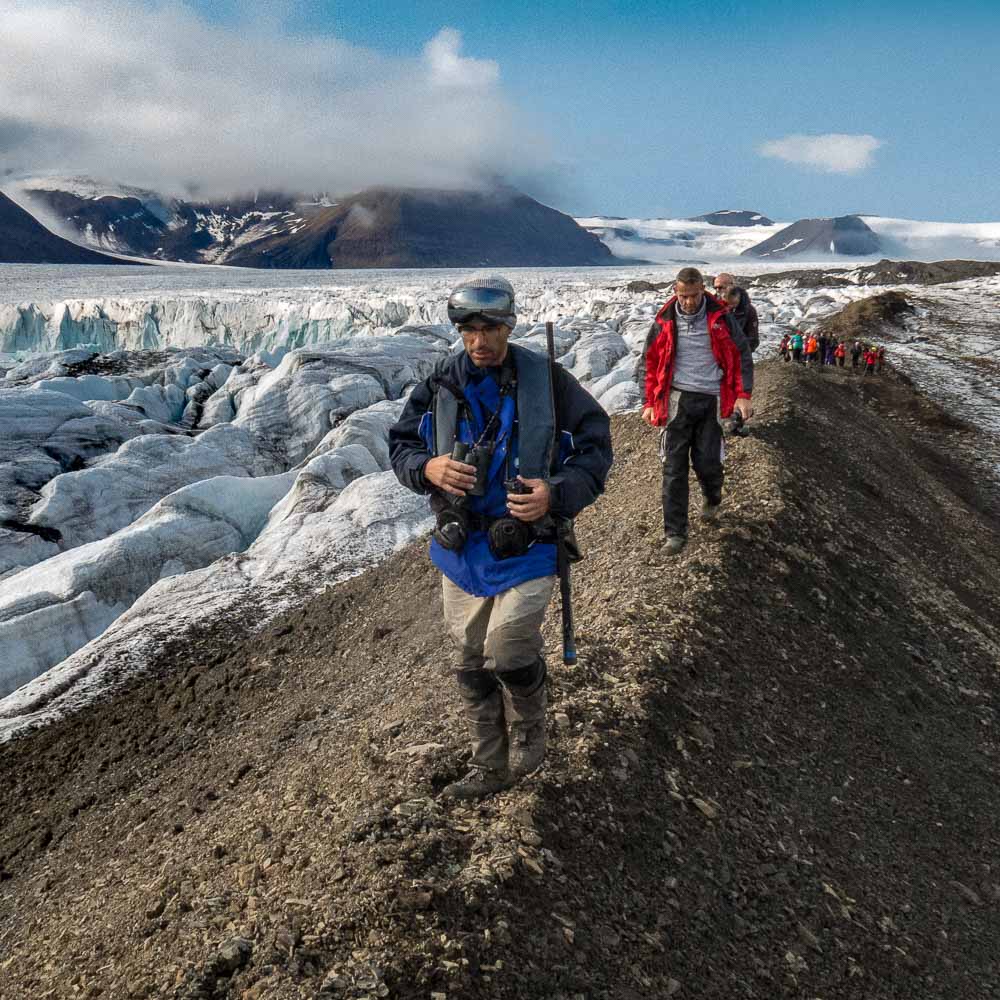 Leading a hike in polar bear country. The most useful weapons are our binoculars, as bears can be anywhere at anytime!
Leading a hike in polar bear country. The most useful weapons are our binoculars, as bears can be anywhere at anytime!
"Weather and ice are the masters"
Inuit proverb: Sila Sigou Tlou Nalaket
How to reach these places
Svalbard
This is the most popular place in the high Arctic to travel by ship in the search for polar bears. Indeed, this is the only place in the North where white bears are not killed either for cultural reasons, for trophy hunting or by poachers. The place is quite “small”, in comparison with others in the Arctic, and taking a journey around the archipelago can be quick, if necessary. As these trips are expensive, this is a way for the companies to decrease their prices: a 6 days trip will definitely be much cheaper than a 12 days trip, however, I recommend staying 9 to 10 days or longer. You will have much more time to enjoy the outdoors, to get memorable wildlife encounters, and you will not have the rushed feeling of being run from one place to another. In my opinion, 10 days is the minimum time you should spend to have an idea of what the archipelago has to offer.
Svalbard is administrated by Norway. You land on the biggest island, Spitsberg, at the only town and capital of the place: Longyearbyen (the city of Longyear). It’s a place quite far North: 79°N latitude. In the winter time, the islands are known for receiving groups to observe aurora borealis. Then, from March to May, when the sun comes back after the long period of darkness: the season for dog sledging, snow-mobiling and skiing starts. In summer time, when the snow melts and the fjord empty themselves from sea ice, ships can navigate around and they all depart from the unique town Longyearbyen. The summer season for expedition vessels nowadays start from mid-May to the beginning of September.
These are three GPS tracks of trips I led around Svalbard (green, orange and light blue). Just to show you how different the route can be, depending on the wildlife, weather and ice conditions.
The North East coast of Greenland
I like the North-East coast of Greenland a lot! It is a very remote area, not very well known. You do not find a lot of offers to travel that far, fortunately! Yes, fortunately, because we can still experience complete solitude, and this deserves a lot of interest!
Along the East cost of Greenland, you find two parts: The North and the South. The Northern part includes the North-East Greenland National Park: the largest national park in the world. This is one of my favorite playgrounds to travel to! It is not uncommon to be alone for days, with no sign of other human beings, nor buildings, nor other ships. Scoresbysund is also one of the largest fjord systems on our planet.
South of Scoresbysund along the Blosseville coast you will start to find a few more villages, and it is a lot greener too!
To travel that far you have a few options:
- by ship: you depart from Longyearbyen in Svalbard and head West. After 1.5 to 2 days at sea you reach Greenland, and then you continue your navigation South along the coast. The journey ends either at one of the harbors in Iceland, or at the airport of Nerlerit Inaat at Constable point. Another option, is to depart from Iceland to reach Greenland and then return back to Iceland. Other trips bring you to Constable Point by return plane from Iceland. My favorite option is of course to depart from Longyearbyen, Svalbard, as this is the best way to explore the northern coasts and to go as far North as you can. The reverse route is also possible. You depart from Iceland, reach Greenland, sail North, and ends in Svalbard.
- by plane: you take off from Iceland (Reykjavik or Akureyri) and reach one of the airports on the East Coast. These are mostly charter flights. Once at your destination, you need to know what to do! Some airports are close to settlements, others at a distance. And there are no roads to connect the villages. You can only travel from one settlement to another by sea...
Once at your destination, several options are possible. Some organize kayak trips, while others cross the icecap, go hunting & fishing, hike in the nature, organize a photo tour, go dog sledging...
The season to discover the North-East Coast of Greenland by expedition ship is quite short, usually only August through September. July is too early as there is still too much sea ice and it is already very dark in October.
These are two trips I led from Svalbard to Iceland (orange and green). The ice conditions on arrival to Greenland, as well as the weather, determines where my first landfall will be. Usually I try to start as North as I can! Then, the number of days of the trip plays an important role. If the trip is too short in time I cannot stretch our route too much. For that reason, I like longer trips: this gives us more time to explore...
The West coast of Greenland
The west coast of Greenland is very popular. This is the place that attracts most people. There is a very practical reason for that: the infrastructure. Most of the Greenlandic settlements are located on the West coast. Therefore, those trips are very often focused on the local culture.
A classic trip consists in flying to Kangerlussuaq, and from there you can travel up and down along the coast. As you find more airports on the West, a lot of different options also exist.
You can also fly there on your own and prepare everything in advance from home. There are a lot of local guides to offer their services. Usual activities in Greenland are: hiking, fishing and hunting, dog sledging, skiing, etc...
All different sorts of ships offer trips to the West coast, from what I call “monster-ships” (carrying up to 3000 passengers) to the smaller expedition vessels and sailing boats. Of course, I will always prefer the expedition ships, with more flexibility, that can deviate their route to seize any opportunities that arises.
Another GPS track from one of my trips to Western Geenland
Franz Joseph Land
Ah... That Russian archipelago is a jewel in the high arctic! Few people on Earth had the privilege to approach its coastline. Fewer to land on one of its 192 islands and stay in the area a few days, a week or more to explore this fantastic scenery and history.
Truth be told, Franz Joseph Land is not the first place you want to visit if you have never been to the arctic before. Usually this destination attracts a more experienced crowd. However, those without Arctic experience can still find the object of their childhood fantasy or dreams. Indeed, the Franz Joseph Archipelago represents the high Arctic: a lot of ice, a rare vegetation, a rocky barren landscape, and very few animals representative from the North: walrusses, polar bears, bowhead whales, and some traces of human exploration.
This place is even less visited that the North-East coast of Greenland. The fact that the archipelago is under Russian administration does not help and pushes away a lot of tour operators who face tough challenges, a complex system, and regulations that can be updated last minute.
The easiest and safest way to reach this Russian National Park is to depart from Murmansk, as you are already in Russia and two and a half days at sea are necessary to reach Franz Joseph Land, where you will stay a week before heading back.
Some other (rare) trips depart from Longyearbyen to reach Franz Joseph Land. This is around one and a half or two days at sea before reaching the Russian islands. The problem in that case, is consequent: you have left Norway and crossed the Russian border. The first step then is to clear immigration in Franz Joseph land. In a place without a town, it is a real challenge! To solve this issue, there is one permanent military base that will do the paperwork for you. However, you must reach the base first, if ice conditions allow, then it takes 12 to 24 hours to complete the job. Finally, you need to repeat the operation on the way out! So, I do not recommend this option.
Other than buying a trip via a tour operator, if you are not part of a film crew or a scientific team, I find it very difficult to reach this place on your own.
Two GPS tracks from a few trips I led there. Both are from Longyearbyen to Franz Joseph Land and back. This destination is a difficult one to manage as the shape of the islands offer very poor protection in case of bad weather and the local regulations are not easy either! But it is such a fascinating place!
Iceland
After the eruption of the unpronounceable volcano in 2010 Iceland, everybody around the world learned that this little volcanic island (which is also a country with a national population around 300000 inhabitants) was on the map!
Since then, the tourism exploded, and prices too.
To my opinion the best way to explore this area is to rent a car and travel all around. Take care as some roads can be closed due to snow conditions or poor weather... Yes, weather in Iceland is very poor. You can have a lot of wind (really a lot), a lot of rain too, and it is never warm even in summer time!
The scenery is... volcanic! No trees or building will block your view as soon as you are outside of a town. It is very popular to bird and whale watch in summer time, go around some volcanoes, glaciers, geysers and see some waterfall. It is very quiet as the density of the population is very low. In winter time the place is very famous for looking at aurora borealis, as Iceland is on the polar circle and the period of darkness gets longer.
It is also possible to visit Iceland by ship and make a circumnavigation. This is a comfortable way not to have to change hotel every night while going around the island.
This is not my favorite place to be honest as the high arctic is much more exciting, but if you have never been to the arctic it can be a good start.
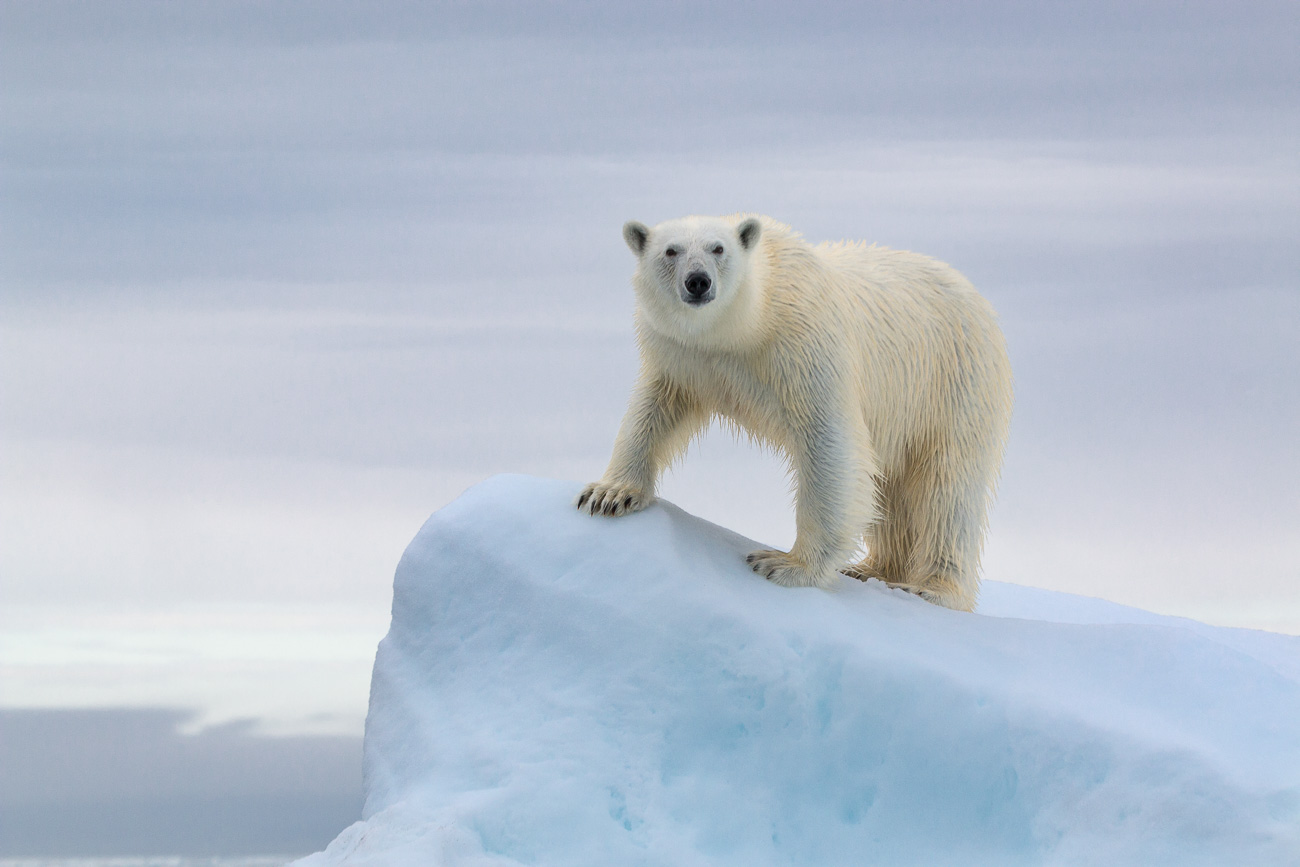
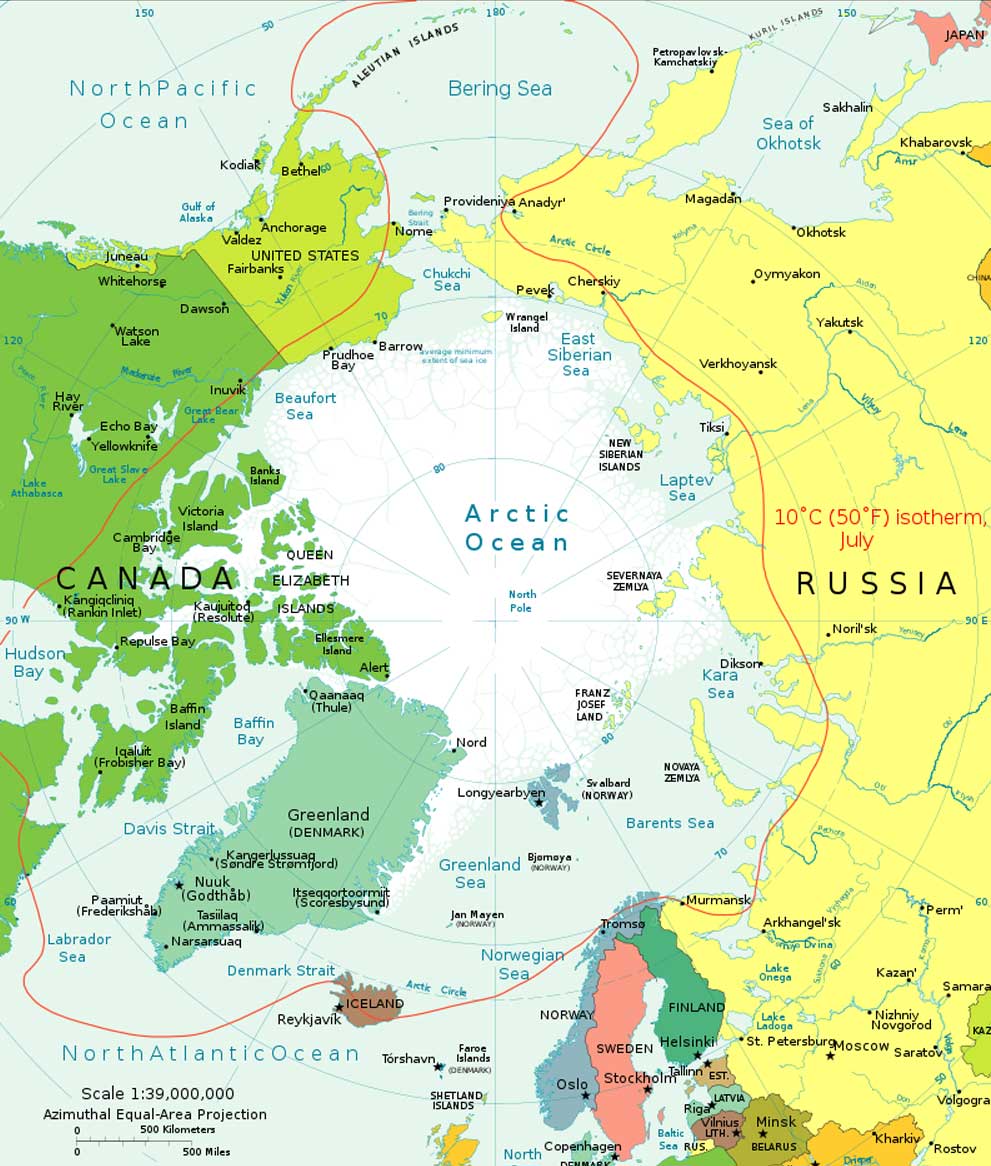


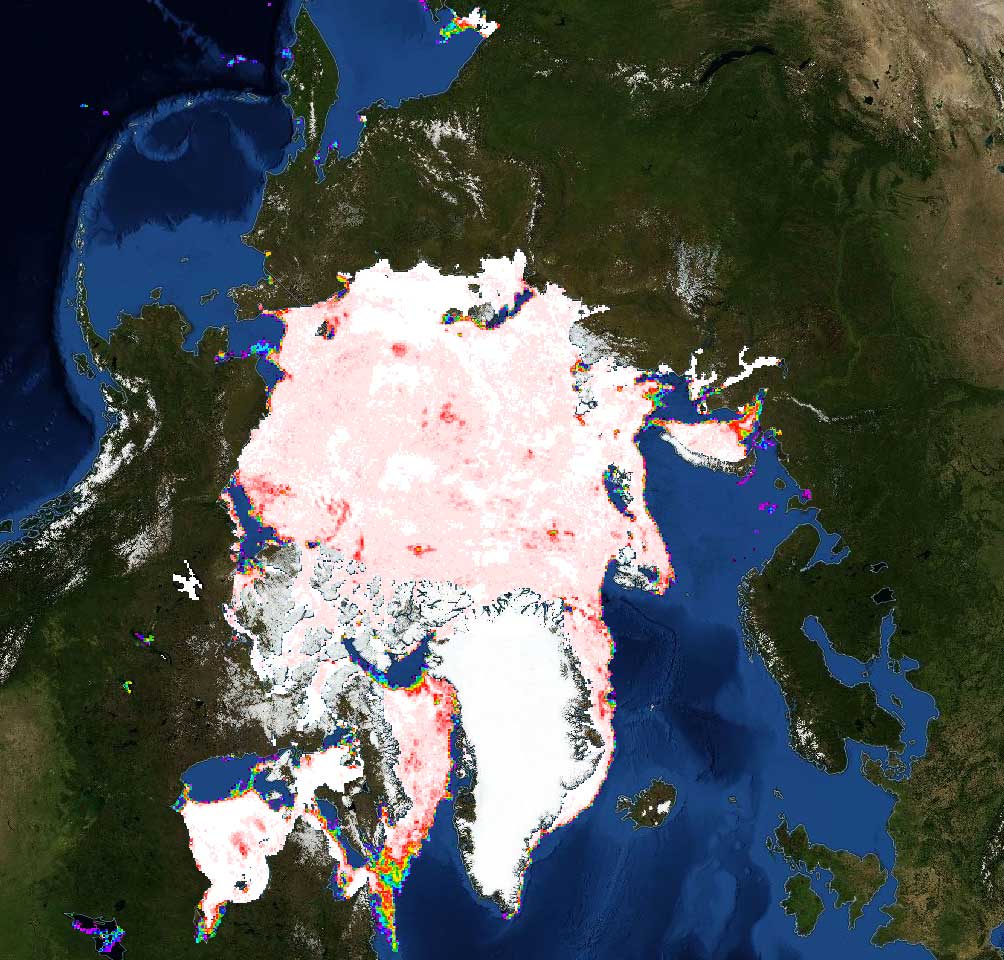
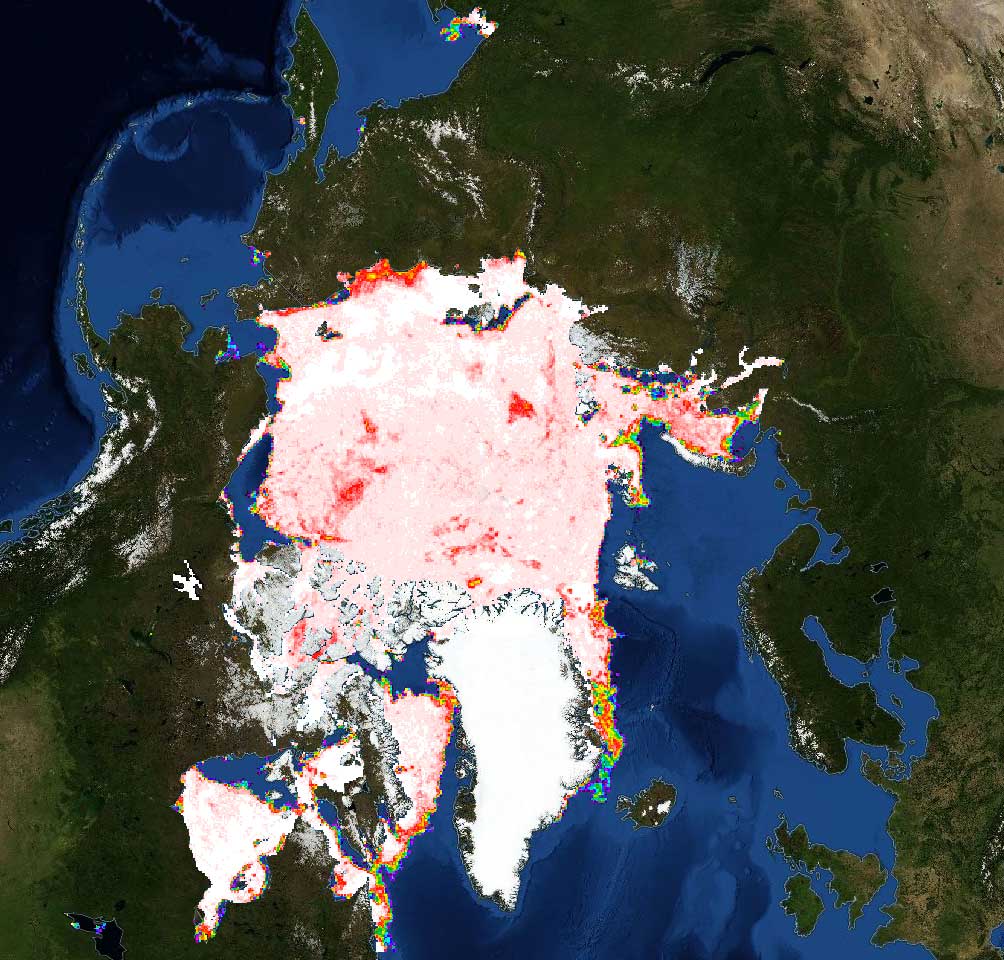

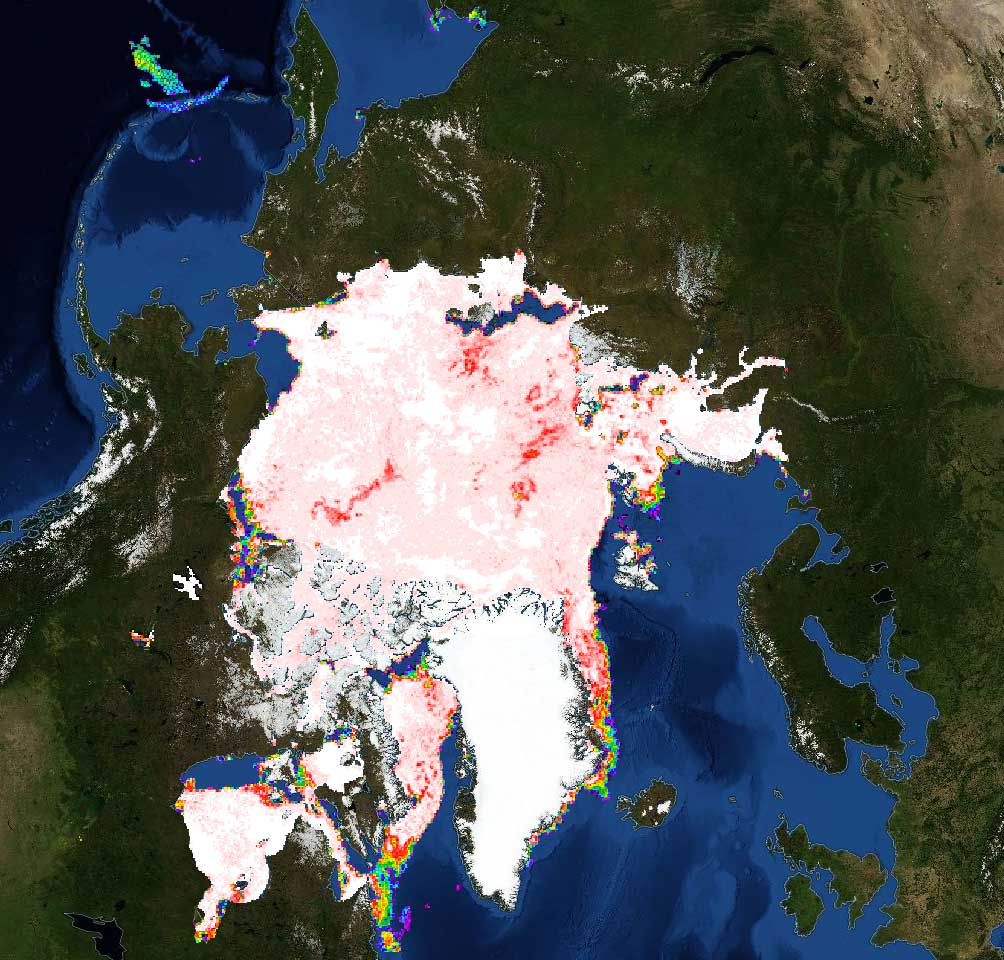

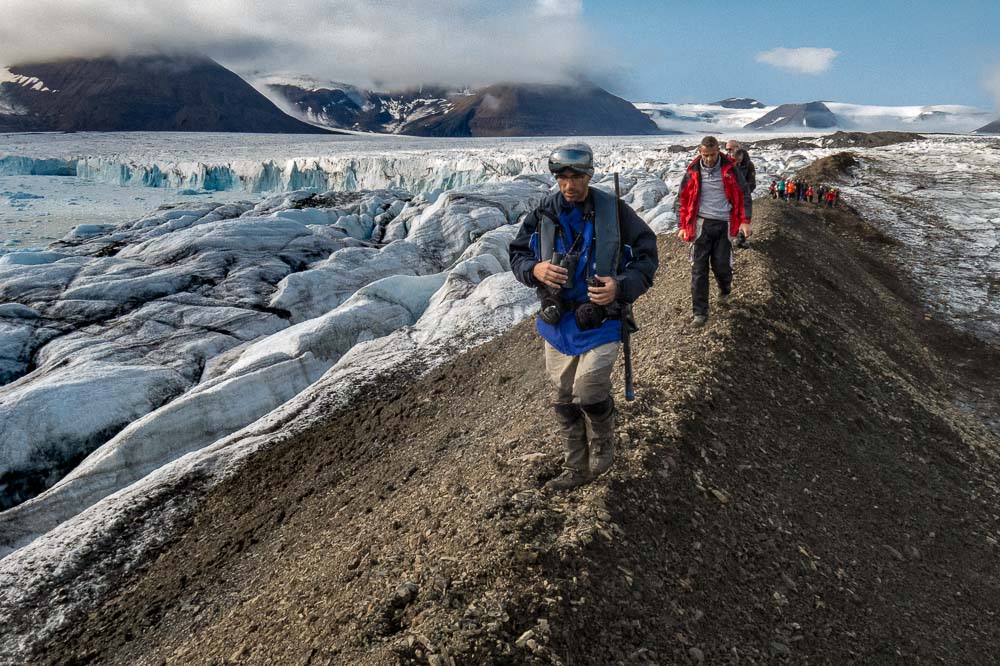 Leading a hike in polar bear country. The most useful weapons are our binoculars, as bears can be anywhere at anytime!
Leading a hike in polar bear country. The most useful weapons are our binoculars, as bears can be anywhere at anytime!